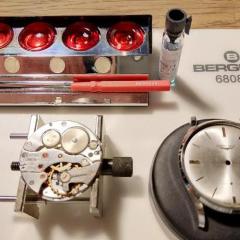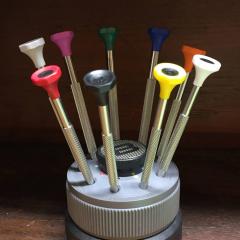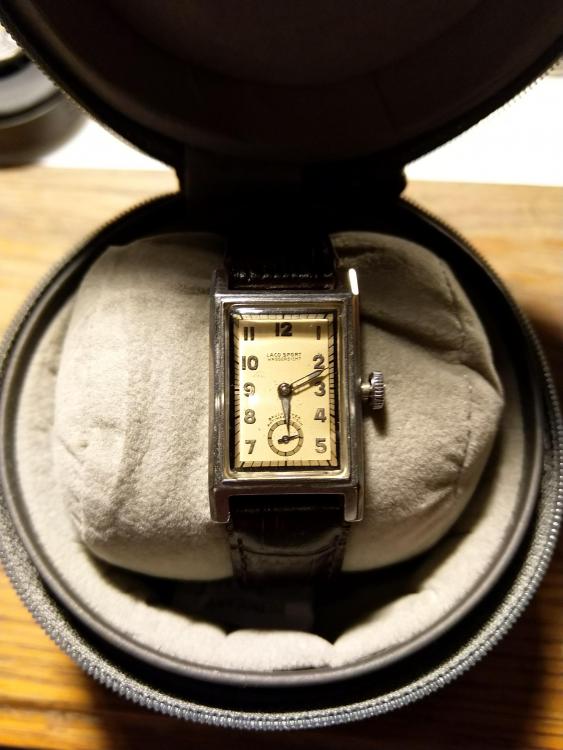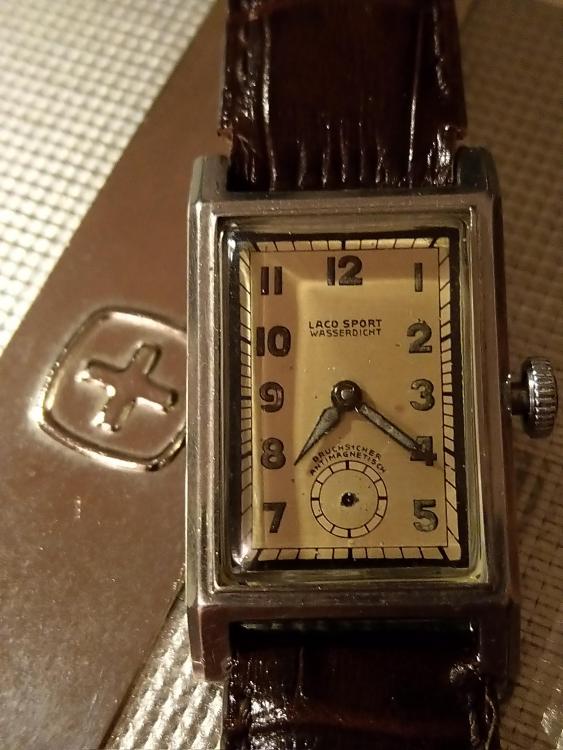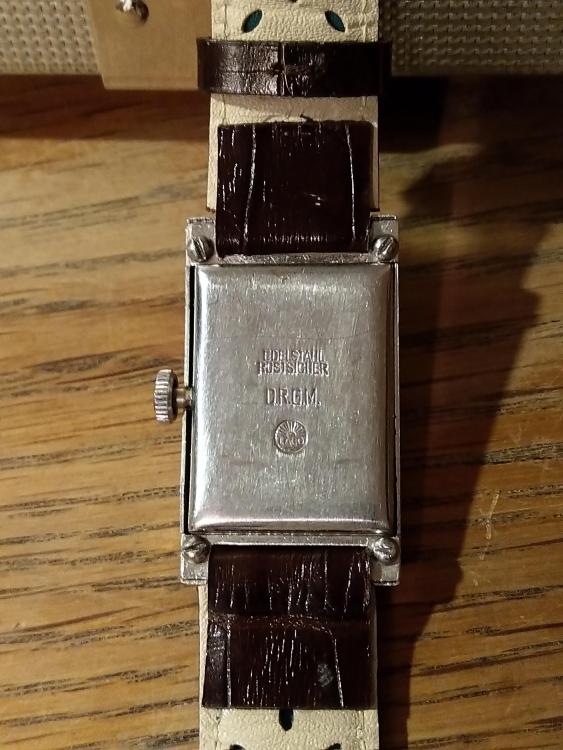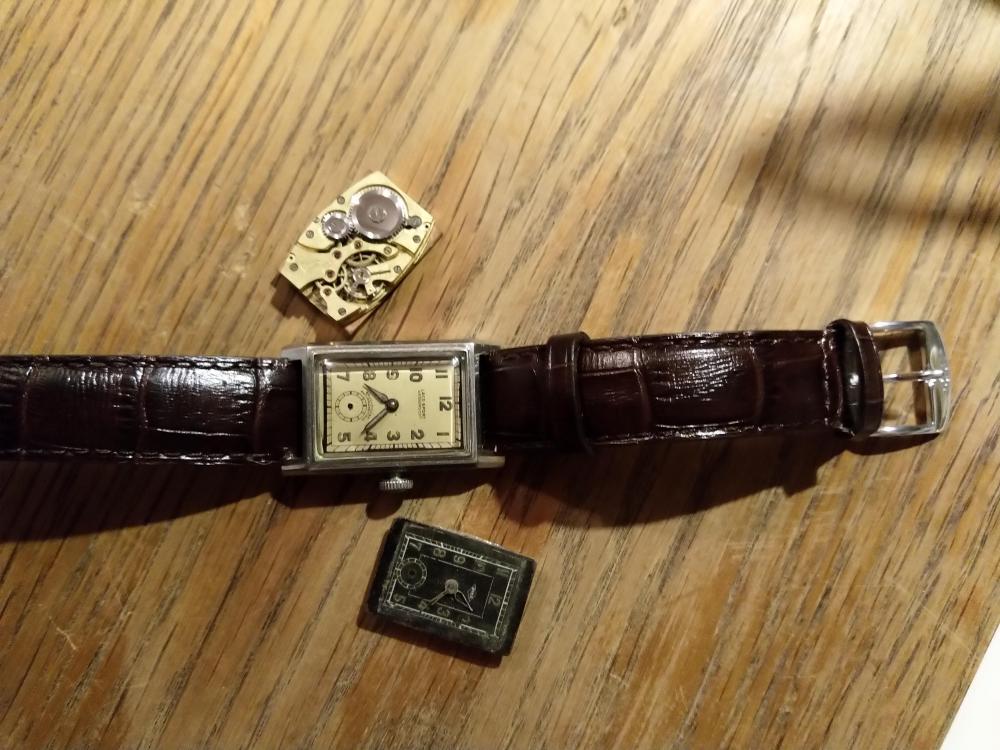Leaderboard
Popular Content
Showing content with the highest reputation on 11/27/18 in all areas
-
Just by the looks I would guess it's an AS 984 or some in that family.They came from 10.5" to 12.5" When you say every gear is set in motion I assume you mean the drive train too? If that the case you have two choices as I see it. 1. Either pin on the escapement wheel has snapped. 2. If the escapement wheel is turning too then either pin on the pallet fork has snapped of or it is not aligned. Just some thoughts on the moving gears.2 points
-
1 point
-
1 point
-
1 point
-
The hairspring stud holds the hairspring attached to the ballance bridge. The hairspring should be coiled concentric and level. Check the fork arbor pivots, pallets, escape wheel and its pivots and all train gears. Regards joe1 point
-
1 point
-
1 point
-
Hi it’s what you call pin set movement if you need spare parts they use these movements in trench watches if you need a glass I will probably have one. Sent from my iPhone using Tapatalk1 point
-
The PTA or Pultra's are beautiful lathes. they were made by Smart Brown who made top notch tool makers lathe, same caliber as a 10ee or Hardninge HLV. I've a 10mm PTA, next size up, with all the accouterments and love it. I struggled with urethane belt joining for a long time. The challenge is perfect alignment so you have vibration free operation and secondly there is a cure time so it should held perfectly in position for up to 30 minutes. Sans cure is why the break and the small the size the more challenging a strong perfect joint is - that comes from a conversation with a belt manufacturing when I finally asked for help. Eventually I made the following fixture and its hard not get perfect joints. Basically 4 cold rolled steel bars with holes drilled as shown and dowel pins in reamed holes to insure alignment. First you clamp both sides of the belting with say 1/8" protruding. Slip a hot knife between the halves, get the belt good and gooey, pull the knife and clamp the to sides together. Leave for half an hour, trim with nail clippers and you have a perfect belt. It works so well I had a belt manufacturer ask to quote making them for them for resell (didn't bother).1 point
-
Laco Sport, an early enigma for me until I looked up the clues on the watch. D.R.G.M on the caseback stands for Deutsches Reich Gebrauchsmuster, a German Patent marking used between 1891-1945, so that is how I know its produced at the latest in 1945. Despite of it's Art deco look it has a Laco Cal.550 (Durowe) powerhouse and that was not produced until the start of 1940 according to Mr Ranfft. So the watch was produced sometime between 1940-1945. The next enigma that taunt me is why I never can find a suitable sub second to it, I realize I have two complete movements as spare but none with a sub second on it. Maybe if you have one lying around I might have something interesting to swap with......1 point
-
I actually can’t find the video either, sorry. The trick is to make a hole in the end of the leather strap with this tool Basically you ream a hole a bit bigger than the sewing needle and then use 5lb test fishing line to sew the two ends together...and sew it loose enough so you can straighten the belt out and the two sewed ends are tip to tip. I use a watch hand vice (for enlarging hand holes) to clamp the two ends beside each other so I can make the holes and sew them easily.Here I am melting the knot end leftovers. I think my video on the Boley Leinen Lathe shows the resulting belt. And this video at the 1 minute mark shows the belt Sent from my iPhone using Tapatalk Pro1 point
-
1 point
-
I've opened hundreds of these G10s. You need a quality blade case opener like a Horotec. I have only once had to tap the blade with a brass hammer.1 point
-
At a guess I would say the fault is the escape wheel. Looking at the readings there is a regular levelling off after approx 17 beats. Check its pivots and check for bent teeth, check it's jewels.1 point
-
I don't know what the correct value is, but you never re-time a mov.t based on the lift angle, which has no influence whatsoever on rate and beat error. Only amplitude is influenced, by about 1.5 deg of instrument reading for each one of lift angle, but since amplitude can vary easily by 5 - 10 deg depending on power charge and position, that is also negligible. Now, this discussion has been had already, complete with formulas and experimental confirmation, as soon I can find the original thread I'll merge this one into it.1 point
-
While we're talking cannon pinions. This is a must for that gigantic tool box. It's basically a fancy pair of nail clippers with a micro adjuster. Made by Bergeon and comes with a fancy price. It's the best tool I've ever used for tightening cannon pinions and in my opinion, more accurate than using a staking set. Sent from my SM-G920F using Tapatalk1 point
-
Whatever method is used it is important to pull straight and even because it is so easy to break the pinion.1 point
-
I think you're going to find you don't have to be that exact on this. I've attached an image to explain about the poising problem. So as you can see from the Image the lower the amplitude the greater the effect of positional errors. Then as you approach 220 positional errors are no longer a problem. Then as you go over 220° positional errors are less of a problem. This is why it be nice if your watch was always running at least 220 or higher it minimizes positional errors. As far as faultfinding goes and the amplitude has to be correct I would really like to see some examples where having incorrect amplitude prevents you from doing any of these. Most users of timing machines leave them at the default 52°. Then what about the days of the paper tape machine they didn't even have the lift angle only a paper graphical display?1 point
-
AWCI is where I am getting this. I just finished watch theory class last week! Diamondslayer1 point

